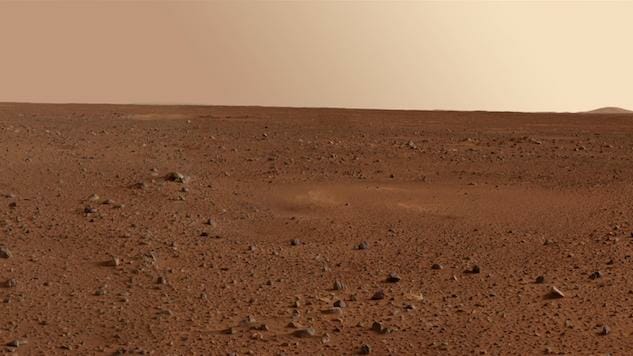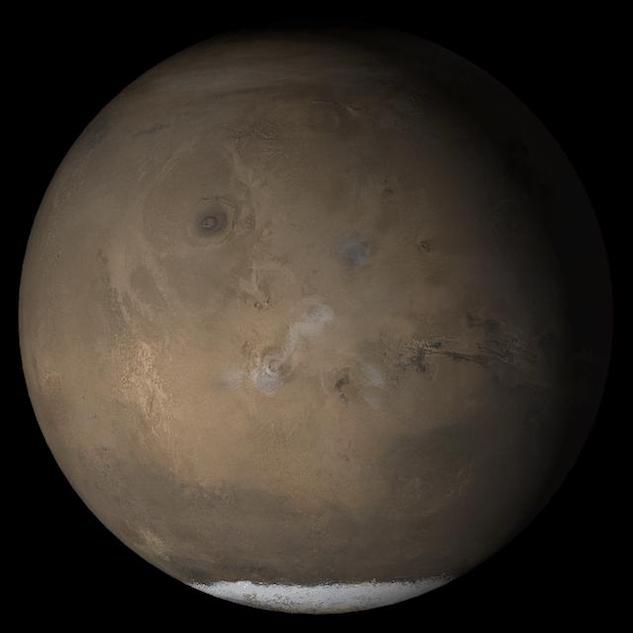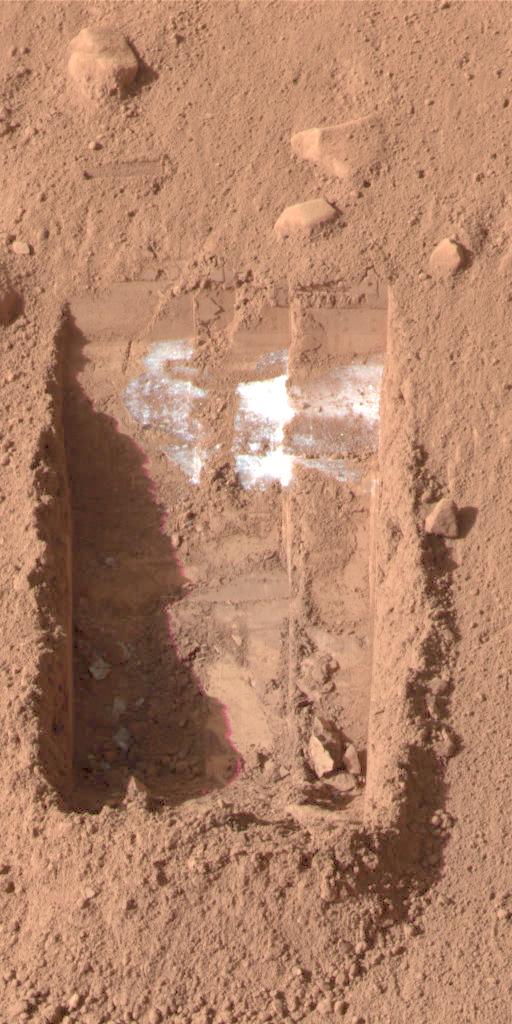
Space Matter is a weekly column that delves into space science and the mechanics of spaceflight. From the latest discoveries in the universe around us to the fits and starts of rocket test flights, you’ll find analysis, discussion and an eternal optimism about space and launching ourselves into the cosmos.
![]()
Mars is a frozen red planet, with polar ice caps and substantial subsurface ice. Its atmosphere today is very thin, composed mainly of carbon dioxide, and the planet is mostly dry. But Mars once had a thick atmosphere that protected abundant liquid water sources; canals carved by water on the Mars’ surface led astronomers in centuries past to think that there was an entire ancient Martian civilization waiting to be discovered. But somehow, the atmosphere of our sister planet has been lost to space. What happened to Mars’ atmosphere? How do we know it had one in the first place?
 Photo courtesy of NASA/JPL/Malin Space Science Systems
Photo courtesy of NASA/JPL/Malin Space Science Systems
In 2013, NASA launched a spacecraft called Mars Atmosphere and Volatile Evolution, or MAVEN, in order to study the Martian atmosphere and understand its current state (and what got it there). A few months ago, the MAVEN team published their first major findings. They studied two different isotopes of the noble gas argon within the thin atmosphere of the red planet. If you remember back to your high school chemistry classes, argon is nonreactive. It won’t react with any other elements within the planet’s atmosphere or on its surface. The only thing that could change the amount of argon in Mars’ atmosphere is if something violent and devastating happened. The MAVEN team studied two different isotopes of argon—one light, one heavy. The idea is that a lighter isotope would be easier for the solar wind to sweep away; the heavier isotope should be more representative, then, of Mars’ original atmosphere composition. The comparison between the two would determine how much atmosphere Mars has lost over the last few hundred million years.
The bottom line? According to the results, it appears that roughly 66% of Mars’ atmosphere has been stripped by solar wind. This created a drastic climate shift on the planet; the atmosphere was once thick enough to support greenhouse warming and liquid water. Once its bulk had been stripped, the planet became the frozen, desolate place it is today.
 The Phoenix Mars Lander discovered ice in the Dodo-Goldilocks trench on Mars in 2008 Photo courtesy of NASA/JPL-Caltech/University of Arizona/Texas A&M University
The Phoenix Mars Lander discovered ice in the Dodo-Goldilocks trench on Mars in 2008 Photo courtesy of NASA/JPL-Caltech/University of Arizona/Texas A&M University
But if the atmosphere was stripped by solar wind, it means that something must have first affected the Martian magnetic field, which is supposed to protect the planet from solar particles. Today, Mars’ magnetic field is very weak, but that can’t always have been the case. Earth’s magnetic field traps radiation particles and protects the planet from the ravages of solar wind. It’s what ensures our atmosphere is able to stay in place; for Mars to have had such a thick atmosphere in the past, it must have had a comparable magnetic field to Earth’s. Once that magnetic field was out of the way, it was likely relatively easy for the solar wind to strip the rest of the planet.
Rotations inside the Earth are what create our magnetic field. The planet’s rotation produces currents in our liquid outer core, called dynamo, which function like a giant electromagnet. Mars’ core is, quite simply, too cool to produce the same currents, which is why its magnetic field is so weak. Something must have occurred that interrupted the dynamo processes within Mars’ atmosphere.
 The Northern Lights, or Aurora Borealis, are caused by solar wind hitting the Earth’s magnetic field. Photo by Niccolò Ubalducci
The Northern Lights, or Aurora Borealis, are caused by solar wind hitting the Earth’s magnetic field. Photo by Niccolò Ubalducci
There are multiple theories that explain how it might have happened; a prevailing one is that an asteroid (or series of asteroids) impacted the planet around 4 billion years ago, around when life was forming on Earth. One impact might not have been enough to completely destroy the red planet’s magnetic field (it would have eventually been able to re-form), but somewhere in the neighborhood of 20 major impacts could have done just that. While the magnetic field could have rebounded from a single impact, if the hits were in quick enough succession, they could have chipped away at Mars’ magnetic field, eventually overwhelming its ability to heal itself.
Even now, gases are escaping from the thin Martian atmosphere into space (as they are from Earth’s—and we don’t exactly know why that’s happening). By taking a closer look at what’s happening on Mars and understanding how the planet lost—and continues to lose—its atmosphere, not only can we understand the evolution of our own planet but we can take the first steps into figuring out what terraforming Mars for human habitation might entail. Can we “jump start” Mars’ magnetic field? Can we replenish its atmosphere? The only way we’re ever going to know is if we study the red planet.
Top photo courtesy of NASA/JPL/Cornell
Swapna Krishna is a freelance writer, editor and giant space/sci-fi geek.